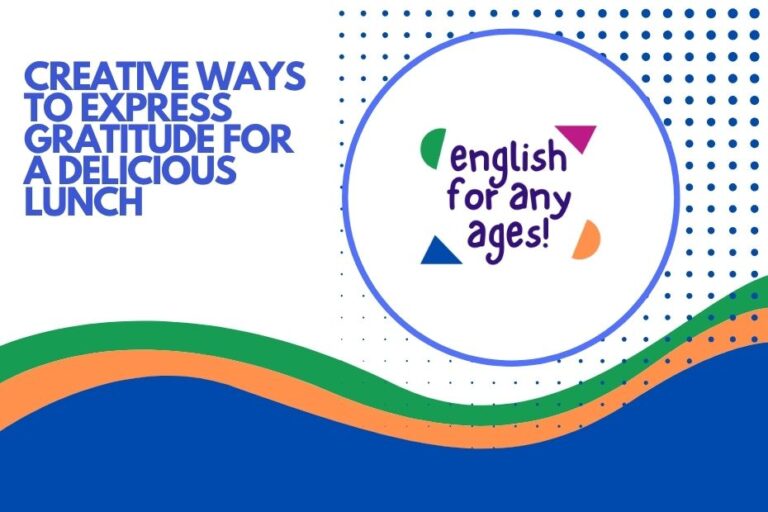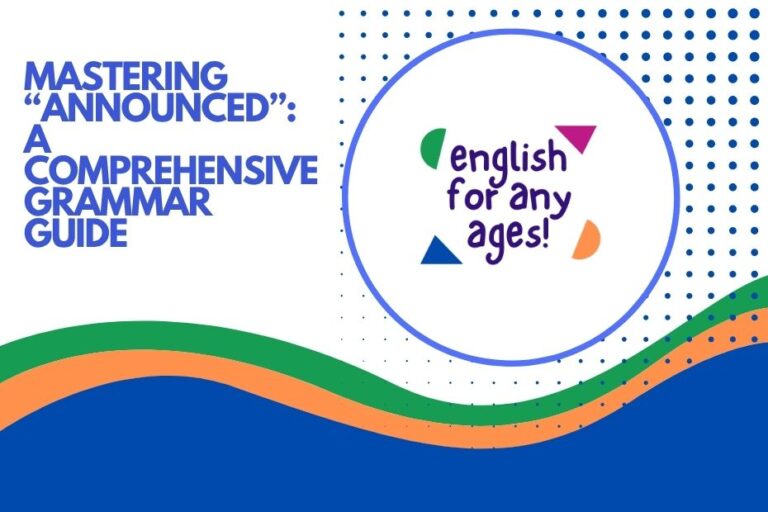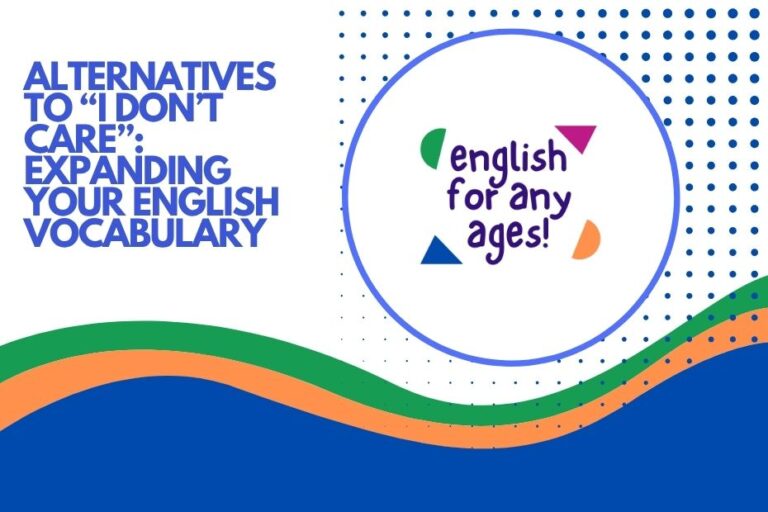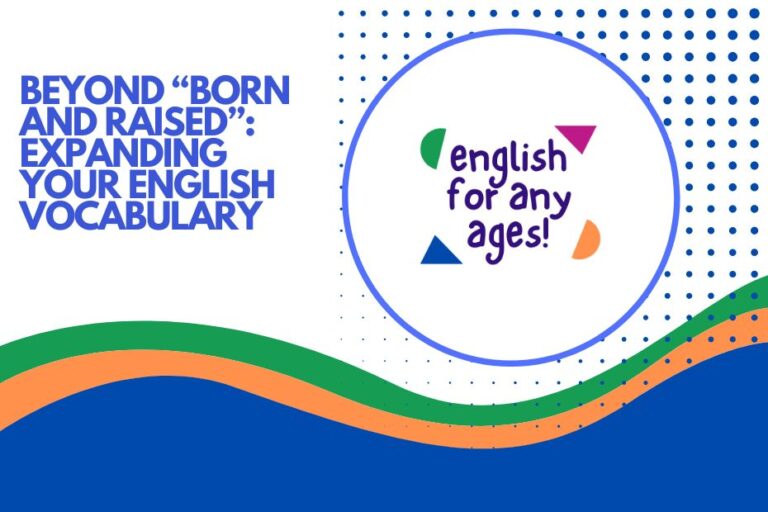Other Ways to Say “It Was Nice Talking to You”: A Comprehensive Guide
Mastering polite conversational closings is crucial for effective communication in English. Saying “It was nice talking to you” is a common and appropriate way to end a conversation, but using only this phrase can make your speech repetitive and lack nuance.
This article provides a comprehensive guide to alternative expressions, each tailored for different contexts and levels of formality. Whether you’re chatting with a colleague, networking at a conference, or speaking with a friend, this guide will help you diversify your vocabulary and make a lasting impression.
This guide is perfect for English language learners, professionals, and anyone looking to enhance their communication skills.
Table of Contents
- Introduction
- Definition: Conversational Closings
- Structural Breakdown of Conversational Closings
- Types and Categories of Conversational Closings
- Examples of Conversational Closings
- Usage Rules and Guidelines
- Common Mistakes to Avoid
- Practice Exercises
- Advanced Topics in Conversational Closings
- Frequently Asked Questions (FAQ)
- Conclusion
Definition: Conversational Closings
A conversational closing is a phrase or statement used to signal the end of a conversation in a polite and socially acceptable manner. Its primary function is to wrap up the interaction gracefully, leaving a positive final impression. Closings can range from simple acknowledgments to more elaborate expressions of gratitude or anticipation for future interactions. They are crucial for maintaining relationships and ensuring smooth social interactions.
The classification of conversational closings depends on the context and relationship between the speakers. They can be categorized as formal, semi-formal, or informal. Formal closings are used in professional or unfamiliar settings, while informal closings are suited for friends and family. Semi-formal closings bridge the gap, appropriate for acquaintances or colleagues with whom you have a friendly but not intimate relationship.
The effectiveness of a conversational closing relies on its appropriateness for the situation. Using an overly formal closing with a close friend can sound awkward, while an overly casual closing in a business meeting might be perceived as unprofessional.
Therefore, understanding the nuances of different closings is essential for effective communication.
Structural Breakdown of Conversational Closings
Conversational closings, while seemingly simple, often follow a specific structure to ensure politeness and clarity. The core components typically include:
- Acknowledgement: Recognizing the interaction that has taken place. This might involve explicitly stating that you enjoyed the conversation or learned something new.
- Positive Sentiment: Expressing a positive feeling about the interaction, such as pleasure, gratitude, or optimism.
- Farewell: A standard farewell phrase, such as “Goodbye,” “Take care,” or “Have a good day.”
- Optional: Future Contact: An indication of a desire for future interaction, such as “Let’s talk again soon” or “I look forward to seeing you again.”
These elements can be combined in various ways to create closings that are appropriate for different situations. For instance, a formal closing might include all four elements, while an informal closing might only include a positive sentiment and a farewell.
Understanding this structure allows you to construct your own conversational closings, adapting them to fit specific circumstances and personal preferences. By mastering the art of crafting effective closings, you can enhance your communication skills and leave a positive impression on others.
Types and Categories of Conversational Closings
Conversational closings can be categorized based on their level of formality and the context in which they are used. The primary categories are formal, semi-formal, informal, and business-specific.
Formal Closings
Formal closings are used in professional settings, with individuals you don’t know well, or when addressing someone in a position of authority. These closings emphasize respect and politeness. They often include more elaborate language and avoid contractions or slang.
Examples of situations requiring formal closings include job interviews, meetings with senior executives, presentations to large audiences, and interactions with clients or customers in a highly professional context.
Semi-Formal Closings
Semi-formal closings strike a balance between formality and friendliness. They are appropriate for colleagues, acquaintances, and individuals with whom you have a cordial but not intimate relationship. These closings allow for a slightly more relaxed tone while still maintaining a level of professionalism.
These are suitable for interactions with coworkers you see regularly, networking events, casual conversations with clients, or when addressing someone you’ve met a few times but don’t know well personally.
Informal Closings
Informal closings are used with friends, family, and close acquaintances. They are characterized by their relaxed and casual tone, often incorporating slang, colloquialisms, and affectionate expressions. These closings emphasize closeness and familiarity.
Informal settings include conversations with close friends, family gatherings, casual chats with neighbors, or interactions with people you know very well on a personal level.
Business-Specific Closings
Business-specific closings are tailored for particular professional scenarios. They might emphasize gratitude, action items, or expectations for future communication. These closings are designed to be efficient and results-oriented.
These are used in email correspondence, follow-up calls, project meetings, or any situation where clear communication and professional etiquette are paramount.
Examples of Conversational Closings
Here are some examples of conversational closings, categorized by formality level. Each category includes a variety of phrases to suit different situations.
Formal Closing Examples
The following table illustrates formal closing examples:
| Closing Phrase | Context | Explanation |
|---|---|---|
| “It was a pleasure speaking with you.” | Ending a formal phone call or meeting. | Expresses politeness and respect. |
| “Thank you for your time and consideration.” | Concluding a job interview or formal presentation. | Shows gratitude for the other person’s attention. |
| “I appreciate the opportunity to discuss this matter with you.” | Closing a formal negotiation or discussion. | Highlights the value of the conversation. |
| “I trust this information is helpful. Please let me know if you require further assistance.” | Ending a formal email or letter. | Offers continued support. |
| “I am grateful for your insights and guidance.” | Concluding a meeting with a mentor or advisor. | Expresses deep appreciation. |
| “We value your partnership and look forward to future collaboration.” | Closing a business agreement or contract discussion. | Reiterates the importance of the business relationship. |
| “I am most obliged for your assistance.” | Ending a conversation where someone has provided significant help. | A very formal way to express gratitude. |
| “It has been an honor to speak with you.” | Ending a conversation with someone of high status or importance. | Expresses respect and admiration. |
| “Thank you for your attention to this important matter.” | Concluding a presentation or discussion about a serious topic. | Emphasizes the significance of the subject. |
| “I remain at your service should you require anything further.” | Ending a formal correspondence, offering continued support. | A highly formal and polite offer of assistance. |
| “Your expertise has been invaluable, thank you.” | Expressing gratitude after receiving expert advice. | Acknowledges the value of the other person’s knowledge. |
| “I am deeply grateful for your contribution to this project.” | Acknowledging someone’s significant contribution to a project. | Expresses sincere appreciation for their efforts. |
| “We appreciate your diligence and thoroughness in this matter.” | Complimenting someone’s dedication and attention to detail. | Recognizes their hard work and commitment. |
| “Thank you for your unwavering support.” | Expressing gratitude for continuous support. | Acknowledges their loyalty and help. |
| “I extend my sincere gratitude for your understanding.” | Thanking someone for their comprehension and empathy. | Acknowledges their ability to understand a difficult situation. |
| “Your commitment to excellence is greatly appreciated.” | Recognizing someone’s dedication to high standards. | Highlights their pursuit of quality. |
| “I am indebted to you for your guidance.” | Expressing a deep sense of obligation for someone’s advice. | Acknowledges the significant impact of their guidance. |
| “Thank you for your exemplary service.” | Recognizing outstanding performance or assistance. | Highlights their exceptional service. |
| “I am profoundly grateful for your generosity.” | Expressing deep gratitude for someone’s kindness. | Acknowledges their generous actions. |
| “We are honored to have had this opportunity to collaborate with you.” | Expressing respect and gratitude for a collaborative effort. | Highlights the privilege of working together. |
| “Your dedication to this project is truly commendable.” | Complimenting someone’s commitment to a project. | Recognizes their hard work and passion. |
| “It has been a privilege to work with someone of your caliber.” | Expressing respect for someone’s high level of skill. | Acknowledges their exceptional abilities. |
| “Thank you for your invaluable contribution to our team.” | Recognizing someone’s significant impact on the team. | Highlights their importance to the team’s success. |
Semi-Formal Closing Examples
The following table illustrates semi-formal closing examples:
| Closing Phrase | Context | Explanation |
|---|---|---|
| “It was good talking with you.” | Ending a conversation with a colleague or acquaintance. | Friendly but still professional. |
| “I enjoyed our conversation.” | Closing a meeting or discussion. | Expresses genuine pleasure. |
| “Thanks for the chat.” | Ending a casual conversation with a coworker. | Informal but still appropriate for a professional setting. |
| “I appreciate your input.” | Concluding a brainstorming session or feedback meeting. | Acknowledges the value of the other person’s contributions. |
| “Have a great rest of your day.” | Ending a conversation in the afternoon. | Polite and friendly. |
| “It was a pleasure connecting with you.” | Ending a networking event conversation. | Expresses satisfaction in making a new connection. |
| “I look forward to our next discussion.” | Expressing anticipation for a future meeting. | Shows interest in continuing the conversation. |
| “Thanks again for your help.” | Expressing gratitude for assistance received. | Acknowledges the other person’s support. |
| “I’m glad we had this chance to talk.” | Ending a conversation that was particularly helpful or insightful. | Expresses satisfaction with the conversation’s outcome. |
| “All the best to you.” | Ending a conversation with well wishes. | A general expression of goodwill. |
| “Hope to see you around.” | Ending a conversation with someone you expect to see again. | Casual and friendly. |
| “It was nice catching up.” | Ending a conversation with someone you haven’t seen in a while. | Acknowledges the time spent reconnecting. |
| “I appreciate you taking the time to talk.” | Thanking someone for their time and attention. | Shows respect for their busy schedule. |
| “Thanks for sharing your insights.” | Expressing gratitude for valuable information. | Acknowledges the other person’s expertise. |
| “I enjoyed hearing your perspective.” | Expressing interest in someone’s viewpoint. | Acknowledges the value of their opinion. |
| “Wishing you a productive week.” | Ending a conversation at the start of the week. | Offers well wishes for their work. |
| “It was good to get your feedback.” | Expressing appreciation for constructive criticism. | Acknowledges the value of their input. |
| “I’m grateful for your collaboration.” | Expressing gratitude for working together. | Acknowledges their contributions to a joint effort. |
| “Thanks for your support on this.” | Expressing gratitude for assistance on a specific task. | Acknowledges their help on a project. |
| “I value your opinion on this matter.” | Expressing respect for someone’s judgment. | Acknowledges the importance of their viewpoint. |
| “Hope you have a pleasant evening.” | Ending a conversation in the late afternoon or early evening. | Offers well wishes for their leisure time. |
| “It was nice to get your take on things.” | Expressing appreciation for someone’s unique perspective. | Acknowledges the value of their point of view. |
| “Thanks for your thoughts on this.” | Expressing gratitude for someone’s ideas and opinions. | Acknowledges their contribution to the discussion. |
Informal Closing Examples
The following table illustrates informal closing examples:
| Closing Phrase | Context | Explanation |
|---|---|---|
| “Catch you later!” | Ending a casual conversation with a friend. | A common and friendly farewell. |
| “Talk to you soon!” | Ending a phone call or text message exchange. | Expresses anticipation for future communication. |
| “It was great chatting.” | Ending a relaxed conversation with a friend. | Expresses enjoyment of the conversation. |
| “See ya!” | Ending a casual encounter. | A very informal and quick farewell. |
| “Have a good one!” | Ending a conversation with a friendly wish. | A general expression of goodwill. |
| “Later!” | An extremely informal and brief farewell. | Common among close friends. |
| “Peace out!” | A slang term for goodbye. | Very informal and casual. |
| “Take it easy!” | Wishing someone well and telling them to relax. | Informal and friendly. |
| “Alright, I’m off!” | Announcing your departure. | Casual and indicates you’re leaving. |
| “Gotta run!” | Indicates you need to leave quickly. | Informal and slightly rushed. |
| “Bye for now!” | A temporary farewell. | Suggests you’ll see or talk to them again soon. |
| “Keep in touch!” | Encouraging continued communication. | Friendly and informal. |
| “Stay cool!” | Wishing someone well and telling them to stay relaxed. | Informal and lighthearted. |
| “All right, see ya later!” | A combination of “alright” and “see you later.” | Casual and friendly. |
| “Have fun!” | Wishing someone enjoyment. | Informal and cheerful. |
| “Enjoy the rest of your day!” | Wishing someone well for the remainder of the day. | Friendly and considerate. |
| “Cheers!” | A British English term for goodbye or thanks. | Informal and friendly. |
| “Holler at me later!” | Encouraging someone to contact you. | Very informal and slangy. |
| “Keep me posted!” | Asking someone to keep you updated. | Casual and interested. |
| “Hit me up!” | Encouraging someone to contact you. | Very informal and slangy. |
| “Laters!” | A shortened version of “see you later.” | Very informal and quick. |
| “Have a good one, mate!” | Using “mate” as a friendly term. | Informal and affectionate. |
| “Take care, buddy!” | Using “buddy” as a friendly term. | Informal and caring. |
Business-Specific Closing Examples
The following table illustrates business-specific closing examples:
| Closing Phrase | Context | Explanation |
|---|---|---|
| “I look forward to your response.” | Ending an email requesting information. | Clearly indicates expectation of a reply. |
| “Please let me know if you have any questions.” | Ending a communication offering further assistance. | Encourages the recipient to seek clarification. |
| “Thank you for your business.” | Ending a transaction or service interaction. | Expresses gratitude for their patronage. |
| “We appreciate your continued support.” | Ending a communication with a long-term client. | Acknowledges their ongoing relationship. |
| “I’ll follow up with you next week to discuss this further.” | Ending a meeting with a clear action item. | Sets expectations for future communication. |
| “We value your feedback.” | Ending a survey or feedback request. | Emphasizes the importance of their opinion. |
| “I am available at your convenience should you need further assistance.” | Offering ongoing support. | Polite and professional. |
| “We are committed to providing excellent service.” | Reassuring a client about service quality. | Reinforces the company’s values. |
| “I look forward to working with you on this project.” | Expressing enthusiasm for a collaboration. | Positive and forward-looking. |
| “Please do not hesitate to contact me if you require anything further.” | Offering open communication. | Encourages the recipient to reach out. |
| “We appreciate your prompt attention to this matter.” | Requesting urgent action. | Emphasizes the importance of a quick response. |
| “Thank you for your patience and understanding.” | Acknowledging any inconvenience caused. | Shows empathy and consideration. |
| “We are confident that this solution will meet your needs.” | Reassuring a client about a proposed solution. | Builds confidence in the outcome. |
| “I am happy to assist you with any further inquiries.” | Offering help with additional questions. | Positive and helpful. |
| “We value your partnership and look forward to a successful collaboration.” | Reinforcing a business relationship. | Positive and optimistic. |
| “Thank you for choosing our company.” | Expressing gratitude for selecting their services. | Appreciative and welcoming. |
| “We strive to provide the best possible experience.” | Reiterating a commitment to quality. | Reinforces customer-focused values. |
| “I am available to discuss this in more detail at your convenience.” | Offering to elaborate further on a topic. | Flexible and accommodating. |
| “We appreciate the opportunity to serve you.” | Expressing gratitude for the chance to provide services. | Humble and appreciative. |
| “Thank you for your continued trust in our services.” | Acknowledging ongoing confidence in their company. | Reinforces a strong relationship. |
| “I will keep you updated on the progress of this project.” | Promising to provide regular updates. | Transparent and proactive. |
| “We are dedicated to meeting your needs and exceeding your expectations.” | Reiterating a commitment to customer satisfaction. | Ambitious and customer-focused. |
| “Please feel free to reach out if you require any further clarification.” | Encouraging open communication and questions. | Welcoming and helpful. |
Usage Rules and Guidelines
Choosing the right conversational closing depends heavily on the context of the conversation and your relationship with the other person. Here are some general rules and guidelines to follow:
- Consider the formality of the situation: In formal settings, stick to phrases like “It was a pleasure speaking with you” or “Thank you for your time.” In informal settings, you can use more casual phrases like “Catch you later” or “Talk to you soon.”
- Reflect the tone of the conversation: If the conversation was serious or sensitive, avoid overly casual closings. If the conversation was lighthearted, a more relaxed closing is appropriate.
- Be mindful of cultural differences: Some cultures have specific customs regarding conversational closings. Research and respect these differences when interacting with people from different backgrounds.
- Avoid clichés: While some common phrases are acceptable, try to avoid overused clichés that can sound insincere. Strive for originality and authenticity.
- Pay attention to nonverbal cues: Observe the other person’s body language and tone of voice to gauge their readiness to end the conversation. Avoid prolonging the conversation if they seem eager to leave.
By keeping these rules in mind, you can select conversational closings that are both appropriate and effective, enhancing your communication skills and leaving a positive impression on others.
Common Mistakes to Avoid
Several common mistakes can undermine the effectiveness of conversational closings. Being aware of these pitfalls can help you avoid awkward or inappropriate interactions.
| Mistake | Correct Example | Incorrect Example | Explanation |
|---|---|---|---|
| Using overly formal language in informal settings. | “See you later!” | “I bid you adieu.” | Formal language can sound stilted and unnatural in casual conversations. |
| Using overly casual language in formal settings. | “It was a pleasure speaking with you.” | “Later, dude!” | Casual language can be perceived as unprofessional or disrespectful in formal situations. |
| Ending the conversation abruptly without a proper closing. | “Goodbye, have a great day!” | (Simply walking away without saying anything.) | Abrupt endings can seem rude or dismissive. |
| Prolonging the conversation after signaling the closing. | “It was nice talking to you. Goodbye.” (And then ending the conversation.) | “It was nice talking to you…so, what else is new?” | Continuing the conversation after signaling the closing can be awkward and confusing. |
| Using insincere or generic closings. | “I really enjoyed hearing your perspective on this.” | “Okay, bye.” | Generic closings can sound insincere and fail to leave a positive impression. |
| Ignoring cultural differences in conversational closings. | (Researching and using appropriate phrases for different cultures.) | Using American slang when speaking with someone from a different cultural background who may not understand it. | Ignoring cultural nuances can lead to misunderstandings and offense. |
| Forgetting to express gratitude when appropriate. | “Thank you for your help with this.” | “Okay, bye.” (Without acknowledging the help received.) | Failing to acknowledge assistance can seem ungrateful. |
| Using negative or pessimistic language in the closing. | “I hope things work out well for you.” | “Well, good luck with that…you’ll need it.” | Negative language can leave a bad impression. |
| Failing to make eye contact during the closing. | (Maintaining eye contact while saying goodbye.) | Looking away or at your phone while saying goodbye. | Poor eye contact can seem dismissive or insincere. |
| Using overly familiar language with someone you don’t know well. | “It was nice meeting you.” | “Love you, bye!” (To someone you just met.) | Overly familiar language can be inappropriate and uncomfortable. |
Practice Exercises
Test your understanding of conversational closings with these practice exercises. Choose the most appropriate closing phrase for each scenario.
| Question | Possible Answers | Correct Answer |
|---|---|---|
| You are ending a job interview. What is the most appropriate closing? | a) “See ya!” b) “Thank you for your time and consideration.” c) “Catch you later!” | b) “Thank you for your time and consideration.” |
| You are ending a casual conversation with a close friend. What is the most appropriate closing? | a) “It was a pleasure speaking with you.” b) “Catch you later!” c) “I appreciate your input.” | b) “Catch you later!” |
| You are ending a meeting with a coworker. What is the most appropriate closing? | a) “Peace out!” b) “Have a great rest of your day.” c) “I am most obliged for your assistance.” | b) “Have a great rest of your day.” |
| You are ending an email to a potential client. What is the most appropriate closing? | a) “Holler at me later!” b) “I look forward to your response.” c) “Alright, I’m off!” | b) “I look forward to your response.” |
| You are ending a conversation with a senior executive. What is the most appropriate closing? | a) “See ya!” b) “It has been an honor to speak with you.” c) “Gotta run!” | b) “It has been an honor to speak with you.” |
| You are ending a phone call with a customer service representative who helped you solve a problem. | a) “Take it easy!” b) “Thank you for your assistance.” c) “Laters!” | b) “Thank you for your assistance.” |
| You are ending a presentation to a large audience. What is the most appropriate closing? | a) “Alright, see ya later!” b) “Thank you for your attention.” c) “Keep me posted!” | b) “Thank you for your attention.” |
| You are ending a networking event conversation with a new contact. What is the most appropriate closing? | a) “It was a pleasure connecting with you.” b) “Peace out!” c) “Holler at me later!” | a) “It was a pleasure connecting with you.” |
| You are ending a formal negotiation. What is the most appropriate closing? | a) “I appreciate the opportunity to discuss this matter with you.” b) “Catch you later!” c) “Alright, I’m off!” | a) “I appreciate the opportunity to discuss this matter with you.” |
| You are ending a conversation with someone who provided significant help. What is the most appropriate closing? | a) “I am most obliged for your assistance.” b) “See ya!” c) “Take care, buddy!” | a) “I am most obliged for your assistance.” |
Advanced Topics in Conversational Closings
For advanced learners, mastering conversational closings involves understanding subtle nuances and cultural contexts. This includes knowing how to:
- Tailor closings to specific cultural norms: Research and understand the appropriate closing phrases and gestures for different cultures.
- Use humor appropriately: Inject humor into closings when appropriate, but avoid potentially offensive or insensitive jokes.
- Incorporate nonverbal cues effectively: Use body language, such as eye contact and smiling, to reinforce the sincerity of your closing.
- Adapt to unexpected situations: Be prepared to adjust your closing based on unforeseen circumstances or changes in the conversation.
- Master the art of the “soft closing”: Gently signal the end of the conversation without being abrupt or dismissive.
By delving into these advanced topics, you can elevate your communication skills and become a truly effective and culturally sensitive communicator.
Frequently Asked Questions (FAQ)
Here are some frequently asked questions about conversational closings:
- Q: Is it rude to end a conversation too quickly?
A: Yes, ending a conversation abruptly without a proper closing can be perceived as rude or dismissive. Always signal your intention to leave and offer a polite farewell.
- Q: How do I politely end a conversation with someone who is talking too much?
A: You can use a “soft closing” technique, such as saying, “It’s been great talking to you, but I need to run to another meeting.” This signals your departure without being overly abrupt.
- Q: What is the best way to end a phone call professionally?
A: A professional phone call closing includes thanking the other person for their time, summarizing any action items, and offering further assistance if needed. For example, “Thank you for your time, Mr. Smith. I’ll send you the documents we discussed, and please don’t hesitate to call if you have any questions.”
- Q: How do I end a conversation with someone who is being negative or difficult?
A: Remain polite and professional, but keep the closing brief. You can say, “I appreciate your perspective. I need to get going now, but I wish you all the best.” Avoid engaging in further debate or negativity.
- Q: Is it okay to use slang in conversational closings?
A: Slang is generally appropriate only in informal settings with close friends and acquaintances. Avoid using slang in formal or professional situations.
- Q: How important is eye contact when saying goodbye?
A: Eye contact is crucial for conveying sincerity and respect. Maintaining eye contact while saying goodbye shows that you are genuinely engaged in the interaction and value the other person.
- Q: What should I do if I






